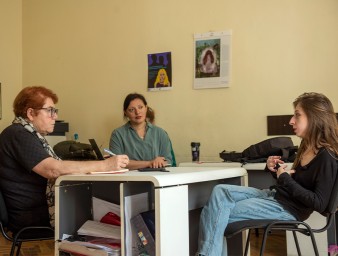The right to peace
04 April 2013

A draft declaration on the right to peace prepared by the Advisory Committee of the Human Rights Council will underwrite progressive negotiations aimed at achieving a United Nations Declaration on the right to peace. To this point, States have generally agreed on the common goal of promoting peace, although there are still significant differences among them. From a legal perspective, the first of the Draft’s 14 articles is one of its most contentious: “Individuals and peoples have a right to peace”.
The President of the Human Rights Council, Remigiusz Achilles Henczel, in his address to the first meeting of the open-ended intergovernmental working group, acknowledged “there is a lack of consensus about the concept of the right to peace as a right in itself, and that several provisions of the Draft Declaration will be the object of intense discussions and negotiations.”
The scope of the Draft is broad, covering the prohibition of the threat or the use of force; conscientious objection to military service; the right to demonstrate for peace; accountability of the military; peacekeeping; the right to development; the right to a safe, clean and peaceful environment; and the rights of victims.
The Draft Declaration would ask States to “engage actively in the strict and transparent control of the arms trade and the suppression of illegal arms trade”. It says everybody has the right to a comprehensive peace and human rights education and the right to resist and oppose oppressive colonial, foreign occupation or dictatorial domination. One article covers private military and security companies, requiring States to “refrain from outsourcing inherently State military and security functions to private contractors.”
Opening the inaugural meeting of the open-ended intergovernmental working group, Deputy High Commissioner, Kyung-wha Kang noted, “much, if not all, of the United Nations work has the ultimate objective of creating a peaceful environment in which all people can fully enjoy their fundamental human rights and freedoms.”
Monica Zulficar, chair of the Advisory Committee that prepared the Draft, said human security is an important positive element of the right to peace that addresses structural violence and includes freedom from fear and from want. She also drew attention to the gender perspective of the right to peace. Women are the primary victims of violence and “should be equal partners in the struggle for the right to peace”, she said.
The Declaration, Zulficar said, offered “a golden chance to address not only the prevention of wars and various forms of violence and armed conflict but also structural violence.”
The Independent Expert on the promotion of a democratic and equitable international order, Alfred-Maurice de Zayas said the Human Rights Council is not only an appropriate forum, but also the best venue to address the individual and collective dimensions of the right.
“Nothing is more urgent today than to secure local, regional and international peace and to shift budgets away from military expenditures and toward the promotion of civil, political, economic, social and cultural rights”, De Zayas said.
The Independent Expert, in his statement to the first session of the Working Group, acknowledged that some States doubt that the human right to peace has a legal basis. However, according to De Zayas, “all of the necessary components of the human rights to peace are already codified in the UN Charter and the Universal Declaration of Human Rights, and most of them are justiciable before the Human Rights Committee and will be justiciable before the Committee on Economic, Social and Cultural Rights when the Optional Protocol enters into force in May 2013.”
“The focus must remain on the beneficiaries of the right to peace... Attention must also be given to the remedies available for violations of the right to peace, including the punishment by domestic courts and eventually by the International Criminal Court of those who engage in aggression and breaches of the peace”, he said.
The Deputy High Commissioner acknowledged the “heated debate and strong views about and around the right to peace”, but commended States for their participatory and inclusive approach during the debate.
“This diversity of views and positions is the distinctive sign, she said, that [the committee] has before it a hard road, a challenging yet enriching journey: the power of negotiating positive outcomes – that you [the committee] have shown many times in the past…”
This meeting was the first part of a long process and States will continue discussing this major issue with a view to contributing to the progressive development of appropriate mechanisms for the promotion of peace, human rights and the end of impunity. A report summarizing the debate of the intergovernmental working group will be presented at the 23rd session of the Human Rights Council next June.
4 April 2013

VIEW THIS PAGE IN:



